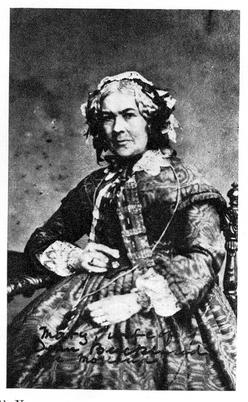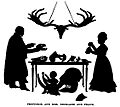Mary Buckland facts for kids
Quick facts for kids
Mary Buckland
|
|
|---|---|
 |
|
| Born | 20 November 1797 Abingdon-on-Thames, Berkshire, England
|
| Died | 30 November 1857 (aged 60) Islip, Oxfordshire, England
|
| Spouse(s) | |
| Scientific career | |
| Fields | Paleontology |
Mary Buckland (born Mary Morland; 1797–1857) was an amazing English scientist. She was a palaeontologist, which means she studied fossils and ancient life. She was also a marine biologist, studying sea creatures, and a talented scientific illustrator. Mary Buckland helped shape early science, especially in the field of geology.
Contents
Early Life and Learning
Mary Morland was born in 1797 in Abingdon-on-Thames, England. Her father was a lawyer. Sadly, her mother passed away when Mary was a baby. She grew up with many half-brothers and sisters.
Mary went to school in Southampton. She also spent time with Sir Christopher Pegge, a professor in Oxford. He and his wife encouraged her interest in science. Even as a teenager, Mary was fascinated by the work of Georges Cuvier, a famous French naturalist. She even sent him some of her own specimens and drawings! Mary became known for her skill in scientific drawing. She helped other scientists like William Conybeare and Georges Cuvier. She also helped her future husband, William Buckland.
Marriage and Family Life
Mary met her husband, William Buckland, in a unique way. Both were traveling in Dorsetshire and reading a new book by Georges Cuvier. They started talking about science. William realized she must be the "Miss Morland" he was supposed to meet!
In 1825, Mary married William Buckland. He later became a very important church leader, the Dean of Westminster. Their honeymoon was a year-long trip to study geology. They visited geologists and important rock formations all over Europe.
Mary and William had nine children. Their son, Frank Buckland, became a famous author. The children grew up surrounded by their parents' fossil collections. Frank could even identify ichthyosaur bones when he was only four years old!
Mary supported her husband's work. She also spent time educating her children and promoting education in local villages. It was harder for women to pursue science back then. Her husband did not always approve of women being deeply involved in scientific research.
Frank Buckland, her eldest son, spoke highly of his mother's contributions. He said she was a great helper to his father. She used her strong mind and organized habits to assist him. She helped him with his writing, making it better. Mary also used her drawing skills to create accurate pictures for his books. She was also very good at fixing broken fossils. She would carefully label all the specimens.
Later Years and Legacy
In 1842, Mary's husband became very ill. His mental health declined. In 1850, he had to go to a special hospital. After this, Mary moved to St Leonards-on-Sea. She continued to appreciate her husband's scientific studies.
Mary Buckland passed away on November 30, 1857. She was buried in Islip, Oxfordshire. Mary had collected a huge number of fossils and other specimens. She also taught at a village school in Islip, near her family's country home.
Contributions to Science
Mary Buckland began her scientific work as a teenager. She created drawings and found specimens for Georges Cuvier, who is often called the founder of paleontology. She also helped William Conybeare, a British geologist.
Mary made models of fossils. She labeled fossils for the Oxford University Museum of Natural History. She studied tiny marine animals called zoophytes. She also repaired broken fossils exactly as her husband instructed.
Mary Buckland helped her husband a lot. She wrote down what he said as he dictated. She edited his work and created detailed illustrations for his books. She took notes on his observations. She even wrote much of his work herself. Her artistic skills are clear in his book Reliquiae diluvianae (1823) and Geology and Mineralogy (1836).
Her son mentioned that she was very "neat and clever" at fixing fossils. She used special cementing techniques. She also helped William Buckland with his experiments. For example, they tried to recreate fossil tracks. She also assisted him when he wrote a volume for The Bridgewater Treatises.
Even after her husband's death, Mary Buckland continued her own research. She examined tiny marine life using a microscope with her daughter Caroline. She also organized a large collection of zoophytes and sponges. She had collected these during visits to the Channel Islands of Guernsey and Sark with her husband. Many of her fossil reconstructions are now kept at the Oxford University Museum of Natural History.
Images for kids
See also
 In Spanish: Mary Buckland para niños
In Spanish: Mary Buckland para niños



